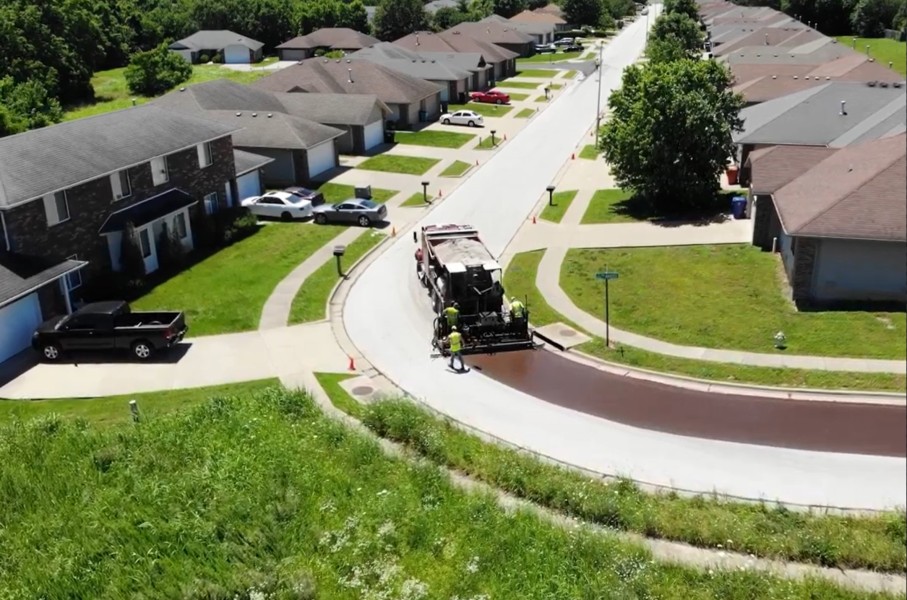Asphalt resurfacing is a common solution for repairing damaged or aging asphalt pavements. However, this process can be time-consuming, expensive, and not environmentally optimal. In contrast, PressurePave® is a pavement preservation product that offers several environmental benefits compared to traditional asphalt resurfacing methods.

1. Lower Emissions: PressurePave® relies on
quick-set chemistry which uses water evaporation during the curing
process. This process emits no volatile organic compounds (VOCs).
Traditional asphalt resurfacing methods can emit VOCs, like sulfur
and carbon monoxide, during the application process. This can have
negative impacts on air quality and the environment. By using
PressurePave®, you can help to reduce emissions and
contribute to a cleaner environment.
2. Reduced Waste: Asphalt resurfacing involves removing the
existing asphalt layer and disposing of it in a landfill. This
generates a significant amount of waste, which can have negative
impacts on the environment. In contrast, PressurePave®
can be applied directly over the existing asphalt layer, reducing
the amount of waste generated and conserving resources.
3. Long-Term Benefits: PressurePave® is designed to extend the lifespan of asphalt pavements, reducing the need for further repairs and replacements, such as sealing cracks or filling potholes. By extending the life of the pavement, PressurePave® can help to reduce the environmental impact of paving projects over time.

Overall, PressurePave® is a pavement preservation
system offering a number of benefits over traditional asphalt
resurfacing methods. Whether you are concerned about the
environment, cost, or the longevity of your pavements,
PressurePave® is a smart and sustainable choice that
can help you achieve your goals for a healthier community.
